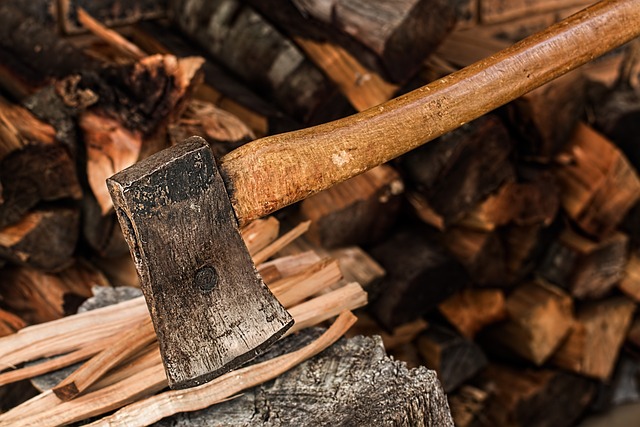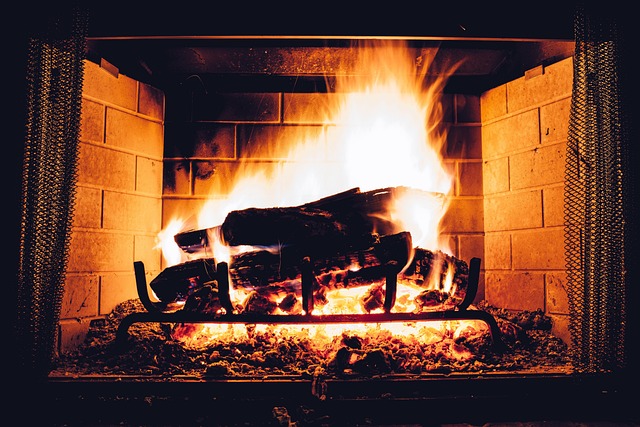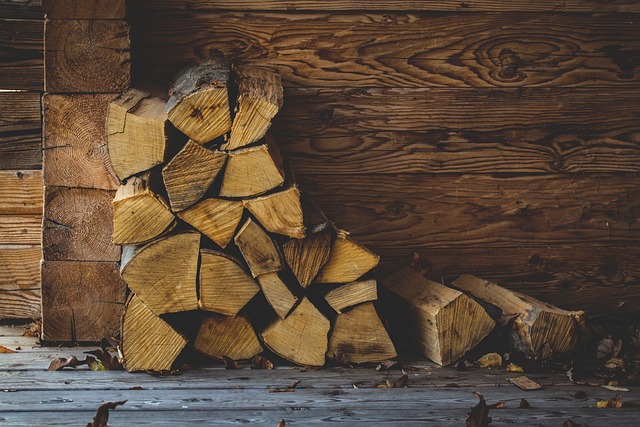Hey there! If you’re here, you must be wondering about the qualities of sycamore trees as firewood. Is Sycamore good firewood?
Yes, sycamore can be good firewood. It’s easily accessible, splits well, and provides respectable heat output. Proper seasoning and good airflow are important to minimize smoke. Consider combining with denser firewood for optimal results.
Let’s dive into sycamore firewood, examining its key characteristics, factors for firewood selection, moisture control, density, heat output, clean combustion, pros, cons, and more.
What is Sycamore Wood?
Before I dive into the qualities of sycamore as firewood, let’s first familiarize ourselves with what sycamore wood is all about.
Sycamore wood comes from the majestic sycamore tree, known for its grandeur and beauty. These trees are commonly found in North America, Europe, and parts of Asia. Sycamores are deciduous and can grow to impressive heights, with their distinctive mottled bark and large, palmate leaves.
When it comes to firewood, sycamore is a popular choice due to its widespread availability. The wood itself has some unique characteristics. Sycamore is generally light in color, ranging from a pale cream to a light brown. It has a relatively smooth texture and a fine grain, making it pleasant to touch and work with.
One of the advantages of sycamore wood is that it is easily accessible. You can often find sycamore trees in urban and suburban areas, as well as in parks and forests. This accessibility can make it a convenient option for those looking to gather their firewood locally.
Now that you have a basic understanding of sycamore wood, let’s delve deeper into its qualities as firewood and explore whether it’s a good choice for your fireplace or wood-burning stove.

Factors to Consider When Choosing Firewood
When it comes to choosing firewood, there are several factors to consider. Let’s take a look at these factors to ensure you make the best choice for your firewood needs:
- Moisture Content: The moisture content of firewood is crucial for efficient burning. Green or freshly cut wood contains a high amount of moisture, which can hinder combustion and produce excess smoke. It’s important to use properly seasoned firewood with a moisture content of around 15-20% for optimal burning. We’ll explore the moisture content of sycamore firewood in more detail later.
- Density: The density of firewood affects its heat output and burn time. Denser woods tend to burn longer and produce more heat. When comparing different types of firewood, it’s helpful to consider their density. We’ll discuss the density of sycamore wood in relation to other popular firewood types.
- Clean Burning and Smoke Production: Choosing firewood that burns cleanly and produces minimal smoke is not only better for the environment but also for your indoor air quality. Some woods, when not properly seasoned or burned, can produce excessive smoke and creosote buildup in your chimney. We’ll explore the clean-burning qualities and potential smoke production of sycamore firewood.
Now, let’s examine how sycamore firewood performs in terms of moisture content, density, and clean burning.
Moisture Content and Sycamore Firewood
Now let’s talk about the moisture content of sycamore firewood. As mentioned earlier, moisture content plays a crucial role in the burning efficiency of firewood. Green or freshly cut wood contains a high amount of moisture, which can lead to poor combustion, excessive smoke, and lower heat output. Therefore, it’s important to properly season firewood to reduce its moisture content.
When it comes to sycamore wood, it has a moderately high moisture content when freshly cut. However, sycamore has the potential to season relatively quickly compared to some other hardwoods. With proper storage and seasoning techniques, you can achieve a moisture content of around 15-20% in sycamore firewood, which is ideal for efficient burning.
To season sycamore firewood effectively, follow these tips:
- Split the wood: Splitting the sycamore logs into smaller pieces will expose more surface area, allowing the wood to dry out more efficiently.
- Proper storage: Store the split sycamore firewood in a well-ventilated area that protects it from rain and snow but allows air circulation. A covered woodpile or a woodshed with open sides works well.
- Time for seasoning: Sycamore firewood typically takes around 6-12 months to season properly. During this time, the wood will gradually lose moisture and become suitable for burning.
Remember, patience is key when it comes to seasoning firewood.
In the next section, I’ll discuss the density of sycamore wood and how it impacts heat output.

Density and Heat Output of Sycamore Firewood
When it comes to heat output, the density of firewood plays a significant role. Denser woods tend to produce more heat and burn for a longer duration, providing sustained warmth for your fireplace or wood-burning stove. Now let’s explore the density and heat output of sycamore firewood.
Sycamore wood falls into the category of medium-density hardwoods. While it may not be as dense as some other firewood options like oak or hickory, sycamore still offers a respectable heat output. When properly seasoned, sycamore firewood can provide a good amount of warmth and keep your space cozy during those cold winter nights.
To enhance the heat output of sycamore firewood, you can consider the following tips:
- Combine with denser woods: Mixing sycamore with denser firewood varieties, such as oak or maple, can help increase the overall heat output. The denser woods will burn for a longer duration, while the sycamore adds additional heat to the mix.
- Use smaller-sized logs: Opting for smaller-sized logs when burning sycamore firewood can increase the surface area exposed to the flame, promoting better combustion and heat release.
- Maintain proper airflow: Ensure that your fireplace or wood-burning stove allows for adequate airflow. Sufficient oxygen supply helps in achieving efficient and optimal burning, thereby maximizing heat output.
While sycamore may not be the densest firewood option available, it still provides a respectable amount of heat when properly seasoned and used in conjunction with other firewood types.
Clean Burning and Smoke Production
When it comes to burning firewood, it’s important to consider the cleanliness of the burn and the amount of smoke produced. Clean-burning firewood not only contributes to a healthier environment but also reduces the buildup of creosote, a flammable substance that can accumulate in your chimney.
Now, let’s address any concerns regarding the smoke production and clean burning of sycamore firewood.
Sycamore wood generally burns relatively cleanly when properly seasoned and used in well-maintained fireplaces or wood-burning stoves. However, it’s worth noting that different factors can affect the smoke production of any firewood, including sycamore.
To minimize smoke production when burning sycamore firewood, consider the following tips:
- Proper seasoning: Ensure that your sycamore firewood is thoroughly seasoned to reduce its moisture content. Properly seasoned wood tends to burn more cleanly and produce less smoke compared to green or unseasoned wood.
- Adequate airflow: Good airflow is crucial for clean burning. Make sure your fireplace or wood-burning stove has proper ventilation, allowing for efficient combustion. This helps in minimizing smoke production.
- Regular chimney maintenance: Keep your chimney clean and free from excessive creosote buildup. Regular chimney inspections and cleanings by a professional are recommended to ensure optimal airflow and reduce the risk of chimney fires.
In the next section, let’s summarize the pros and cons of using sycamore as firewood, considering the factors I’ve discussed so far.
Sycamore Firewood: Pros and Cons
Now that we have explored the qualities of sycamore firewood, let’s summarize the pros and cons to help you make an informed decision:
Pros of Sycamore Firewood:
- Accessibility: Sycamore trees are widespread and often found in urban and suburban areas, making sycamore firewood easily accessible for many people.
- Ease of splitting: Sycamore wood generally splits relatively easily, making it convenient for those who split their own firewood.
- Quick seasoning: Compared to some other hardwoods, sycamore firewood has the potential to season relatively quickly when properly stored and seasoned techniques are employed.
- Respectable heat output: Despite being a medium-density hardwood, sycamore firewood can provide a good amount of warmth when properly seasoned and combined with other firewood types.
Cons of Sycamore Firewood:
- Moderate density: Sycamore wood is not as dense as some other hardwoods, which means it may not produce as much heat or burn as long as denser firewood options.
- Potential for smoke: While sycamore wood can burn cleanly when properly seasoned and burned with good airflow, it’s important to be mindful of smoke production and ensure optimal burning conditions.
Ultimately, the suitability of sycamore firewood depends on your specific needs and circumstances. If you have easy access to sycamore wood and are willing to properly season it, it can be a decent option for providing warmth and ambiance. However, if you prioritize high heat output and longer burn times, you may want to consider combining sycamore with denser firewood varieties.
Remember, experimentation and personal preference also play a role in selecting the right firewood for your needs. Now that you’ve weighed the pros and cons, let’s move on to discussing other considerations and safety precautions when using sycamore firewood.
Other Considerations and Safety Precautions:
Before you start using sycamore firewood, there are a few additional considerations and safety precautions to keep in mind. Let’s take a look at them:
- Storing and Handling: When storing sycamore firewood, ensure it is kept in a dry and well-ventilated area. Moisture can still find its way into seasoned firewood, so protecting it from rain and snow is important. Additionally, practice proper lifting techniques when handling firewood to avoid strain or injury.
- Chimney Maintenance: Regular chimney inspections and cleanings by a professional are essential to ensure proper ventilation and reduce the risk of chimney fires. Creosote buildup can occur with any type of firewood, so schedule routine maintenance to keep your chimney in top shape.
- Safety Precautions: When using sycamore firewood, follow general fire safety guidelines. Keep flammable materials at a safe distance from the fireplace or wood-burning stove, use a sturdy fireplace screen, and never leave a fire unattended. It’s also advisable to have a fire extinguisher nearby in case of emergencies.
- Environmental Considerations: Always ensure that the firewood you use is sourced responsibly and legally. Avoid using wood from protected or endangered tree species. If possible, choose locally sourced firewood to minimize transportation and support local businesses.
Comparison with Other Firewood Types
How Does Sycamore Firewood Stack Up Against the Competition?
When comparing sycamore firewood to other popular firewood types, here’s a breakdown:
| Firewood Type | Density (lbs/ft³) | Moisture Content (%) | Heat Output (BTU) |
|---|---|---|---|
| Sycamore | 25-30 | 15-20 | 18-24 million |
| Oak | 38-45 | 20-25 | 24-28 million |
| Maple | 30-35 | 20-25 | 20-24 million |
| Hickory | 40-50 | 15-20 | 26-30 million |
As you can see, sycamore falls in between these other wood types in terms of density, moisture content, and heat output. Depending on your specific requirements, sycamore may still be a suitable choice.
Tips for Safe Handling
Safety First: Handling Sycamore Firewood with Care
When handling sycamore firewood, keep these safety tips in mind:
- Wear gloves to protect your hands from splinters and prevent blisters.
- Use appropriate tools for splitting, such as a maul or a splitting axe.
- Store firewood away from your home to avoid pests entering your living space.
- Stack firewood in a way that ensures good airflow and prevents moisture buildup.
FAQs
Answers to Your Burning Questions About Sycamore Firewood
Q: Can I use sycamore firewood for cooking in my outdoor oven? A: Yes, sycamore firewood can be used for outdoor cooking as long as it’s properly seasoned and free from any chemicals or contaminants.
Q: Is sycamore wood suitable for a fireplace insert or wood-burning stove? A: Sycamore can work well in a fireplace insert or wood-burning stove when it’s adequately seasoned and combined with other firewood types for extended burn times.
Conclusion
In conclusion, sycamore can be a decent choice for firewood. It’s readily available and easy to split. While not the densest, it provides respectable heat output when properly seasoned. Just ensure good airflow and proper seasoning to minimize smoke.
However, it’s important to keep in mind the proper seasoning and storage of sycamore firewood to achieve optimal burning efficiency and minimize smoke production. Combining sycamore with denser firewood types can also enhance its heat output. By considering these factors and following safety precautions, you can enjoy the warmth, ambiance, and cozy fires that sycamore firewood provides.
Remember, personal preference and experimentation are key when it comes to finding the right firewood for your needs. So, go ahead and give sycamore firewood a try, and feel free to share your experiences and insights with us.
Stay warm, stay safe, and enjoy the crackling flames of your sycamore firewood!

